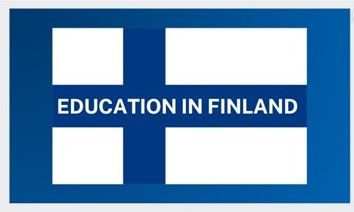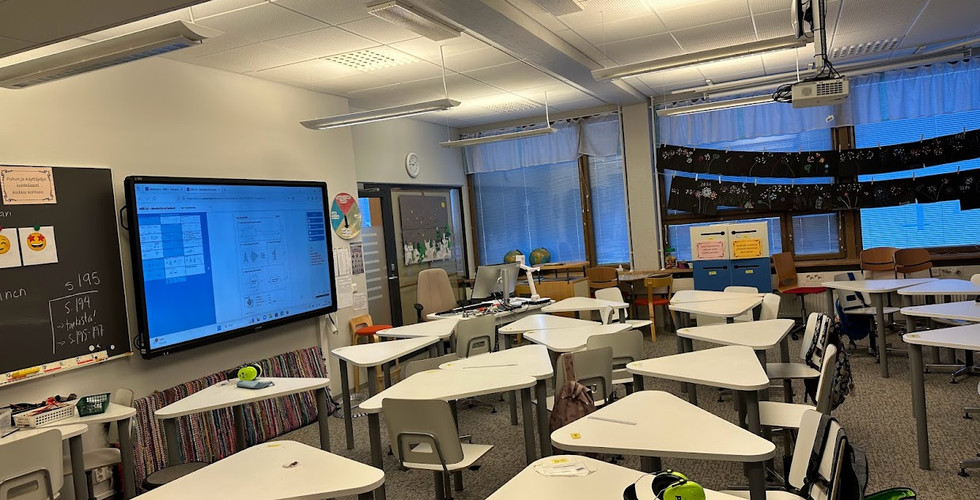Education in Finland Primer
- Dawn Oler

- Jan 21, 2024
- 2 min read
Updated: Mar 1, 2024

Please remember that I am going to put some observations here through the lens of a U.S. teacher. I will try to formulate my thoughts in a way that is inquisitive & appreciative of the societal differences and expectations. I wanted to start by outlining the education system and comparing the Finnish system to the U.S. system for ease of continuing the conversation.
Age | Hours of Lessons per Week | Schooling in Finland | Schooling in U.S. |
8 months - 3 years | Not Applicable | Free Universal Childcare | Private Childcare or Free Early Head Start if qualify as a low income family |
3 years - 4 years | Not Applicable | Free Universal Childcare | Private Childcare or Preschool or Free Head Start if qualify |
Age 5 | Not Applicable | Free Universal Childcare | Required Public or Private Kindergarten |
Age 6 | 4 hours a day | Pre-Primary Education Preschool/Kindergarten "children develop learning-to learn skills through play and joy" | Required Public or Private First Grade |
Age 7 | 15 hours a week | Compulsory Public or Private (CPP) 1st grade | Required Public or Private (RPP) 2nd grade |
Age 8 | 15 hours a week | 2nd grade (CPP) | 3rd grade (RPP) |
Age 9 | 16.5 hours a week | 3rd grade (CPP) | 4th grade (RPP) |
Age 10 | 16.5 hours a week | 4th grade (CPP) | 5th grade (RPP) |
Age 11 | 18.75 hours a week | 5th grade (CPP) | 6th grade (RPP) |
Age 12 | 18.75 hours a week | 6th grade (CPP) | 7th grade (RPP) |
Age 13 | 21.75 hours a week | 7th grade (CPP) | 8th grade (RPP) |
Age 14 | 21.75 hours a week | 8th grade (CPP) | 9th grade (RPP) |
Age 15 | 22.5 hours a week | 9th grade (CPP) | 10th grade (RPP) |
Age 16 | Varies based on program | Upper Secondary School or Vocational Training (CPP) | 11th grade (RPP) |
Age 17 | Varies based on program | Upper Secondary School or Vocational Training (CPP) | 12th grade (RPP) |
Age 18 | Not Applicable | Students must pass matriculation exams and can continue their studies at Universities for free. | Students proceed to the work place, vocational training, or colleges. Students must pay for public and private continuing education. |
Private schools DO exist, however they must receive permission from the government, provide the same required curriculum and they DO receive public funding. It is illegal to have education for profit. "Private schools (schools not operated by the government or local authorities) have not been abolished, though they are very rare: only two percent of all schools are private. Private schools, too, are publically funded and are free of cost because of this. Charging tuition in basic education is prohibited by the Finnish constitution." - Ministry of Education and Culture FAQs.
In comparison, according to the Council for American Private School Education (CAPE), private schools account for 25% of the schools in America and serve 10% of the student population. "About 40% of US private schools are affiliated with religious organizations. While most private schools are tax-exempt, nonprofit entities, some operate on a for-profit basis." - Dunn and Bradstreet First Research
According to the Ministry of Education and Culture, the school year in Finland is 190 days. Classes are 45 minutes in length and there is very little homework if any. Teachers of grades 1-6 teach all the main subjects during the day. Some teachers will stay with the same class for several years, although this is not required by the Ministry. Each municipality sets their own procedures within the guidance they receive and they are given autonomy in managing their education system. All students receive free meals and there is a special education teacher at all schools. There are no national tests in Finland's compulsory schools. Only the matriculation test from vocational or upper secondary school. Throughout a students school career, their teachers have autonomy in how they teach the lessons and how they assess students.
Up to 6th grade, Finnish teachers are required to have a Master's degree in educational pedagogy. After 6th grade they get their Master's in their specialized area. University professors should have their Doctorate.
"Finnish primary and lower secondary education emphasises the following skills and competences:
• thinking and learning to learn • cultural competence, interaction and self-expression • taking care of oneself and managing daily life • multiliteracy • ICT Competence • working life competence and entrepreneurship • participation, involvement and building a sustainable future"
Further reading on the Finnish system is available at https://www.infofinland.fi/en/education
The author of this website/blog/etc. is a participant of the Fulbright Distinguished Awards in Teaching Research Program (Fulbright DA), a program sponsored by the U.S. Department of State’s Bureau of Educational and Cultural Affairs (ECA) with funding provided by the U.S. Government and administered by IREX. The views and information presented are the participant's own and do not represent the U.S.

























Comments